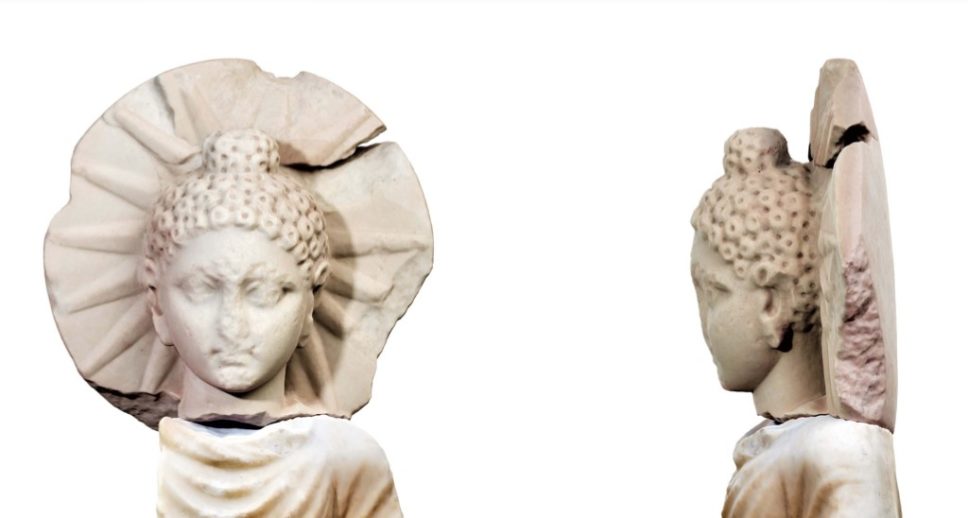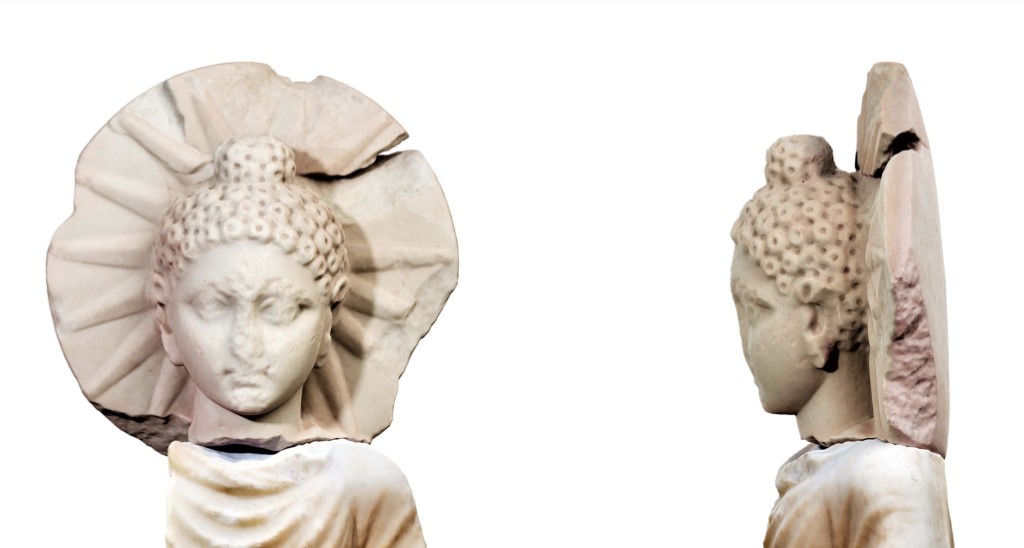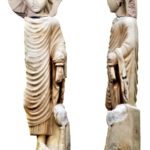Egypt was at the center of a trade route that connected the Roman Empire with many areas of the ancient world, including India. There were several Roman-era harbors on the Red Sea coast of Egypt involved in this commerce, the most important of which was Berenike. Ships from India arrived there with products, such as pepper, semi-precious stones, textiles, and ivory. At Berenike, they were offloaded, and the cargo was transferred to camels that conveyed the goods across the desert to the Nile. Other ships then transported the merchandise to Alexandria and, from there, to the rest of the Roman Empire.
Excavations by an American-Polish expedition uncovered striking evidence for this trade. The most recent discovery was made by Rodney Ast from the University of Heidelberg and his team. It is a marble statue of Buddha placed in the forecourt of the main early Roman period temple of the town dedicated to the goddess Isis. The statue is 71 cm high and depicts Buddha standing and holding part of his clothing in his left hand. Around his head is a disc (halo) with sunrays depicted on it, which is a reference to his radiant mind. Next to him stands a lotus flower. The workmanship is very fine. It is the best evidence thus far excavated for Buddhism in Egypt.
Apart from this statue, archaeologists also found an inscription in an Indian language (Sanskrit) dating to the rule of the Roman emperor Philip the Arab (244–249 CE). This inscription seems not to be from the same time as the statue of Buddha, which is probably much older. Other inscriptions in the same temple were in Greek, dating from the early first century CE up to 305 CE. Archaeologists also found in the temple two 2nd-century CE coins from the central-Indian kingdom of the Satavahanas. The Buddha statue was made from stone probably quarried in the region just south of modern Istanbul, Turkey but it must have been sculpted locally at Berenike and dedicated to the temple by one, or more, of the rich merchants from India.
The discoveries took place in January–February 2022 but they have only recently been publicized by the Supreme Council of Antiquities of Egypt. Steven Sidebotham (University of Delaware) and Mariusz Gwiazda (Polish Centre of Mediterranean Archaeology, University of Warsaw, PCMA UW) co-direct this Polish-American expedition, with a permit held by the PCMA UW, in cooperation with the Egyptian Ministry of Tourism and Antiquities. Excavations in the Isis Temple have been most recently financed principally by the Fritz Thyssen Foundation, with additional support from the Honor Frost Foundation and private benefactors. Excavations at Berenike began in 1994 and since then, the history of this fascinating site has been reconstructed by a large team of international scholars.
More about PCMA research in Berenike
-
Buddha statue found at Berenike/ Posąg Buddy ze świątyni w Berenike (fot. Szymon Popławski/ Berenike Project)



